Liquid Energy
 |
| Photography by Stephen Frink |
December 2004
By Selene Yeager
Photography by Joseph Byrd
They may come in small packages, but that hasn't stopped Americans from guzzling energy drinks like high-test gas. When Red Bull burst on the scene in 1997, Americans consumed one million gallons of these buzz-inducing beverages a year. Just five years later, we were sucking them down to the tune of 23.6 million gallons every 365 days, according to market surveys. As more major players toss their heart-thumping thirst quenchers in the ring, the more we drink them up. From 2002 to 2003, the industry skyrocketed another 44 percent.
With hyperkinetic names like AMP, Rockstar, Monster and Adrenaline Rush, these jazzed-up drinks serve up hefty doses of caffeine as well as vitamin-mineral-herb concoctions, including taurine, guarana, inositol and B-vitamins. Millions of men and women now count on their 8.3-ounce cans of energy to get them through the day. But what will they do for your dive?
"Not much more than a mocha with added sugar," says Liz Applegate, Ph.D., author of Eat Smart, Play Hard. "There are no magical ingredients here. The herbs are generally not present in large enough amounts to have therapeutic effect," she says. Though many offer 100 percent or more of the recommended daily allowance of vitamins like C and B-6, you won't feel energized by those nutrients anymore than you would from chewing a Flintstones vitamin. Taurine, the ingredient in Red Bull (and other beverages) that supposedly "gives you wings" is said to "detoxify" your body and improve performance. But the scientific community says that's just plain bull. Some ingredients like guarana or kola nut will increase energy and may provide increased alertness because of their caffeine kick, says Applegate.
"You may be able to drink one and feel up for a long dive. By the same token, you need to be aware of the jolt these drinks can provide with the one-two caffeine-sugar punch," says Applegate. Most contain about 80mg of caffeine, less than a cup of coffee, but combine it with about 25 to 30g of sugar, more than a Hershey's bar. "You don't want to be jittery or nervous or have GI upset when you're 60 feet down," she says.
Definitely go easy on energy drinks the night before a dive. Yes, they make a tasty vodka cocktail, but the caffeine boost cancels out the sleepy sensation you get from alcohol so you feel a little less intoxicated than you actually are, setting you up for second (or third) rounds you don't really need. Leaving the bar a wide-awake drunk isn't the best setup for a next-day dive.
Bottoms Up
With all the hype for and against them, nutritionists generally agree that these beverages aren't necessarily unhealthy if you drink them in moderation. So if you count on your shot of YJ Stinger to get through your day, by all means, drink up. Just don't toss down too many, and remember you also need plain old water, says Monique Ryan, author of Complete Guide to Sports Nutrition. "Dehydration is always a risk when you're out on a boat all day." Because energy drinks are high in caffeine and concentrated sugar, a shot of Shark (or any energy drink) will actually slow down your body's ability to absorb water. "While the carbohydrate content in these drinks can replenish a tired diver, they shouldn't confuse energy drinks with sports drinks, like Gatorade, which are designed to be hydrating," says Ryan. It's also worth noting that some of the major players, including Red Bull and Rockstar, are now available in sugar-free varieties.
Here's the buzz on today's most popular energy drinks. Most contain about 100 to 140 calories per 8.2- or 8.3-ounce can.
Red Bull

The Buzz: The godfather of energy drinks. Red Bull single-handedly created the energy drink market when it was introduced in 1997. Key ingredients include amino acid taurine, glucuronolactone, a substance said to remove toxins from the body, and B vitamins. Tastes like sugary-sweet medicine.
The Buzz Kill: This once red-hot trendsetter has lost some of its cool factor, since you can find it anywhere chewing gum is sold.
Monster Energy

The Buzz: As the larger-than-life name implies, Monster comes in oversized 16-ounce cans. Its active ingredients are taurine, panax ginseng (an energy tonic), glucuronolactone, guarana, and B vitamins. Sweet and fizzy, Monster is one of the less medicinal tasting of the bunch.
The Buzz Kill: Double the serving means double the sugar, caffeine and calories.
SoBe Adrenaline Rush

The Buzz: Widely regarded as one of the best tasting energy drinks on the market. It promises an energy boost with active ingredients similar to the rest: taurine, vitamins B-6 and B-12, L-carnitine and guarana. Sweet, but not too sweet, and passion-fruity.
The Buzz Kill: Goes down easy so you might be more likely to drink enough to get jittery.
180

The Buzz: The brewmasters at Anheuser-Busch turned their focus from a more traditional kind of buzz to a 21st-century energy buzz when they concocted this nonalcoholic beverage. This one promises to turn your energy around with guarana, vitamin C and essential B vitamins, which help your body generate energy from the food you eat. This drink is sweet and citrusy, and goes down more like soda pop than energy drink.
The Buzz Kill: 180 is not as easy to find as some of its major competitors.
YJ Stinger

The Buzz: "Feel the sting" with taurine; a B vitamin "stack," including riboflavin, thiamine, biotin and pantothenic acid, and guarana, ginseng and yerba matte--another natural caffeine source.
The Buzz Kill: With 32g of sugar, most in the form of high-fructose corn syrup, YJ Stinger is a little more like syrup.
Rockstar

The Buzz: Available in the usual fruity, bubble-gum-like energy drink flavor as well as cola, Rockstar's motto is "Party like a rock star." Standout ingredient: Milk thistle, which the company says helps with hangovers.
The Buzz Kill: Still a little hard to find; often available in double-sized 16-ouncers, which is too much of this sweet stuff.
Shark

The Buzz: Similarly stacked with taurine, guarana and B vitamins. Tastes like a berry blend. The shiny silver can with shark logo looks sharp in a dive bag.
The Buzz Kill: With 35g of sugar, this land shark is considerably sweeter than its competitors.
AMP

The Buzz: If Mountain Dew leaves you flat, this version, chock-full of energy drink additives, may jack you up. Some of its sweetness comes in the form of maltodextrin--a complex carbohydrate that may help prevent the energy spike and crash that often accompanies sugary sodas.
The Buzz Kill: The herb-infused Mountain Dew flavor isn't for everybody.

| | Photography by Stephen Frink|
December 2004
By Selene Yeager
Photography by Joseph Byrd
They may come in small packages, but that hasn't stopped Americans from guzzling energy drinks like high-test gas. When Red Bull burst on the scene in 1997, Americans consumed one million gallons of these buzz-inducing beverages a year. Just five years later, we were sucking them down to the tune of 23.6 million gallons every 365 days, according to market surveys. As more major players toss their heart-thumping thirst quenchers in the ring, the more we drink them up. From 2002 to 2003, the industry skyrocketed another 44 percent.
With hyperkinetic names like AMP, Rockstar, Monster and Adrenaline Rush, these jazzed-up drinks serve up hefty doses of caffeine as well as vitamin-mineral-herb concoctions, including taurine, guarana, inositol and B-vitamins. Millions of men and women now count on their 8.3-ounce cans of energy to get them through the day. But what will they do for your dive?
"Not much more than a mocha with added sugar," says Liz Applegate, Ph.D., author of Eat Smart, Play Hard. "There are no magical ingredients here. The herbs are generally not present in large enough amounts to have therapeutic effect," she says. Though many offer 100 percent or more of the recommended daily allowance of vitamins like C and B-6, you won't feel energized by those nutrients anymore than you would from chewing a Flintstones vitamin. Taurine, the ingredient in Red Bull (and other beverages) that supposedly "gives you wings" is said to "detoxify" your body and improve performance. But the scientific community says that's just plain bull. Some ingredients like guarana or kola nut will increase energy and may provide increased alertness because of their caffeine kick, says Applegate.
"You may be able to drink one and feel up for a long dive. By the same token, you need to be aware of the jolt these drinks can provide with the one-two caffeine-sugar punch," says Applegate. Most contain about 80mg of caffeine, less than a cup of coffee, but combine it with about 25 to 30g of sugar, more than a Hershey's bar. "You don't want to be jittery or nervous or have GI upset when you're 60 feet down," she says.
Definitely go easy on energy drinks the night before a dive. Yes, they make a tasty vodka cocktail, but the caffeine boost cancels out the sleepy sensation you get from alcohol so you feel a little less intoxicated than you actually are, setting you up for second (or third) rounds you don't really need. Leaving the bar a wide-awake drunk isn't the best setup for a next-day dive.
Bottoms Up
With all the hype for and against them, nutritionists generally agree that these beverages aren't necessarily unhealthy if you drink them in moderation. So if you count on your shot of YJ Stinger to get through your day, by all means, drink up. Just don't toss down too many, and remember you also need plain old water, says Monique Ryan, author of Complete Guide to Sports Nutrition. "Dehydration is always a risk when you're out on a boat all day." Because energy drinks are high in caffeine and concentrated sugar, a shot of Shark (or any energy drink) will actually slow down your body's ability to absorb water. "While the carbohydrate content in these drinks can replenish a tired diver, they shouldn't confuse energy drinks with sports drinks, like Gatorade, which are designed to be hydrating," says Ryan. It's also worth noting that some of the major players, including Red Bull and Rockstar, are now available in sugar-free varieties.
Here's the buzz on today's most popular energy drinks. Most contain about 100 to 140 calories per 8.2- or 8.3-ounce can.
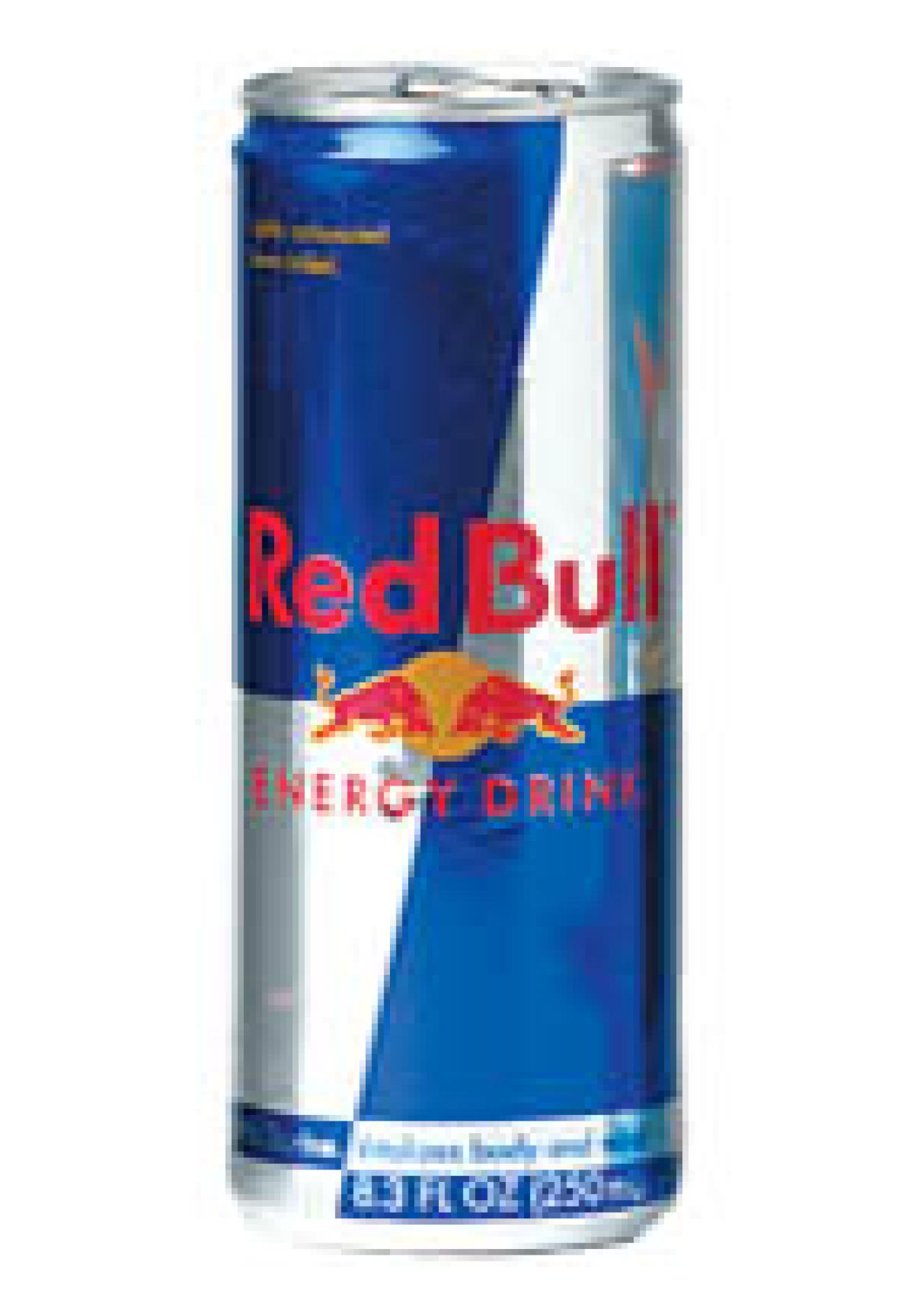
Red Bull
The Buzz: The godfather of energy drinks. Red Bull single-handedly created the energy drink market when it was introduced in 1997. Key ingredients include amino acid taurine, glucuronolactone, a substance said to remove toxins from the body, and B vitamins. Tastes like sugary-sweet medicine.
The Buzz Kill: This once red-hot trendsetter has lost some of its cool factor, since you can find it anywhere chewing gum is sold.
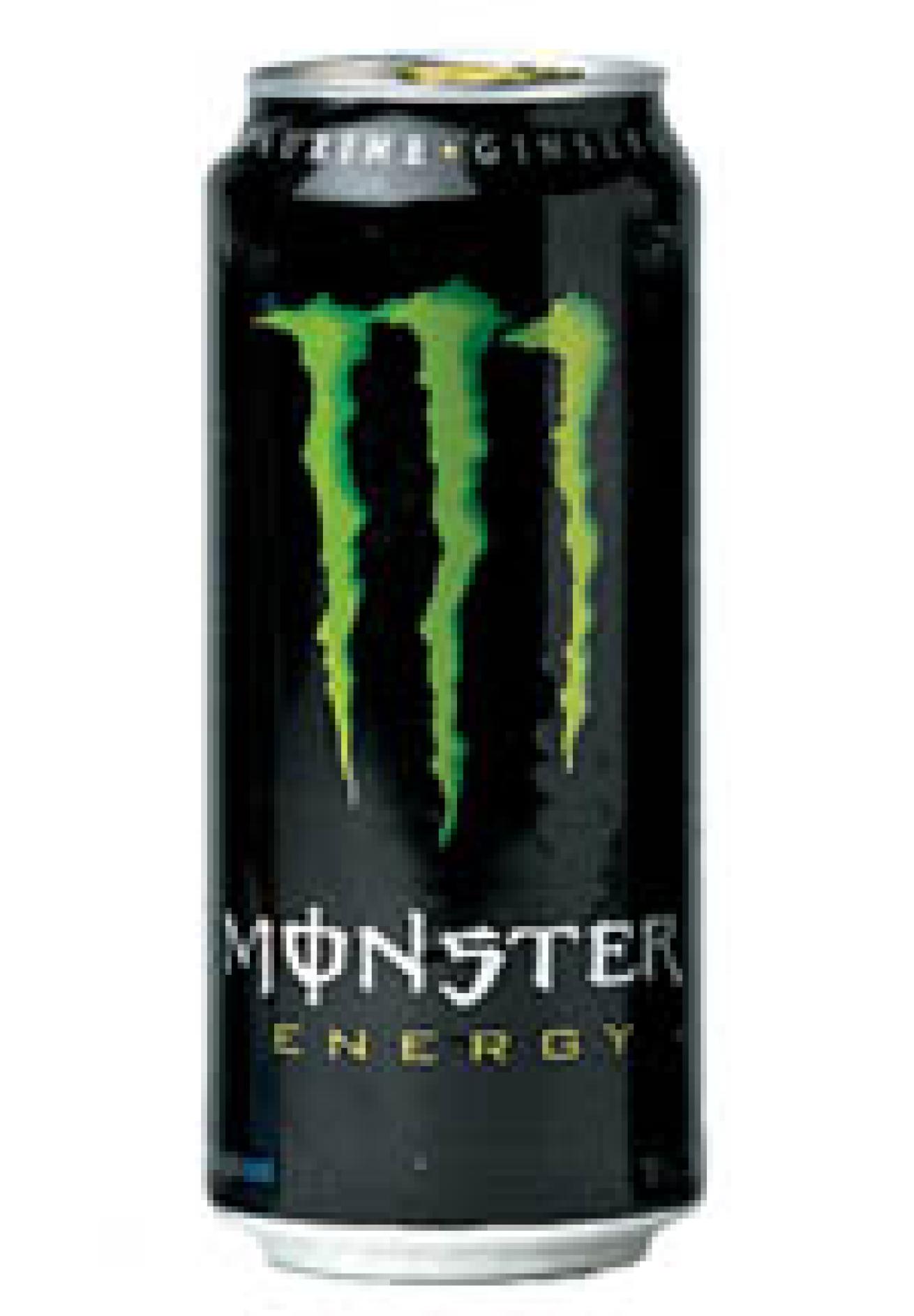
Monster Energy
The Buzz: As the larger-than-life name implies, Monster comes in oversized 16-ounce cans. Its active ingredients are taurine, panax ginseng (an energy tonic), glucuronolactone, guarana, and B vitamins. Sweet and fizzy, Monster is one of the less medicinal tasting of the bunch.
The Buzz Kill: Double the serving means double the sugar, caffeine and calories.

SoBe Adrenaline Rush
The Buzz: Widely regarded as one of the best tasting energy drinks on the market. It promises an energy boost with active ingredients similar to the rest: taurine, vitamins B-6 and B-12, L-carnitine and guarana. Sweet, but not too sweet, and passion-fruity.
The Buzz Kill: Goes down easy so you might be more likely to drink enough to get jittery.
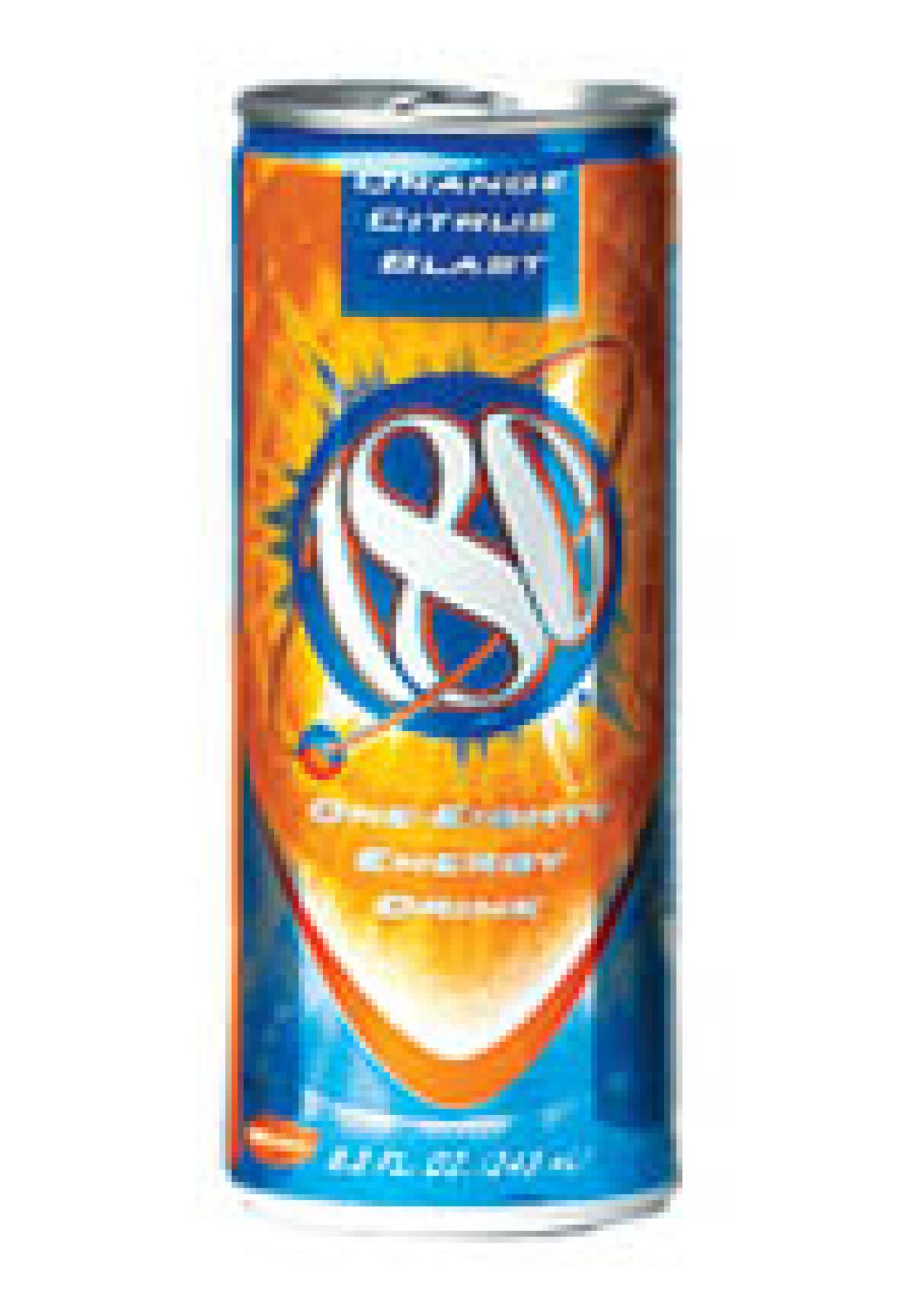
180
The Buzz: The brewmasters at Anheuser-Busch turned their focus from a more traditional kind of buzz to a 21st-century energy buzz when they concocted this nonalcoholic beverage. This one promises to turn your energy around with guarana, vitamin C and essential B vitamins, which help your body generate energy from the food you eat. This drink is sweet and citrusy, and goes down more like soda pop than energy drink.
The Buzz Kill: 180 is not as easy to find as some of its major competitors.

YJ Stinger
The Buzz: "Feel the sting" with taurine; a B vitamin "stack," including riboflavin, thiamine, biotin and pantothenic acid, and guarana, ginseng and yerba matte--another natural caffeine source.
The Buzz Kill: With 32g of sugar, most in the form of high-fructose corn syrup, YJ Stinger is a little more like syrup.
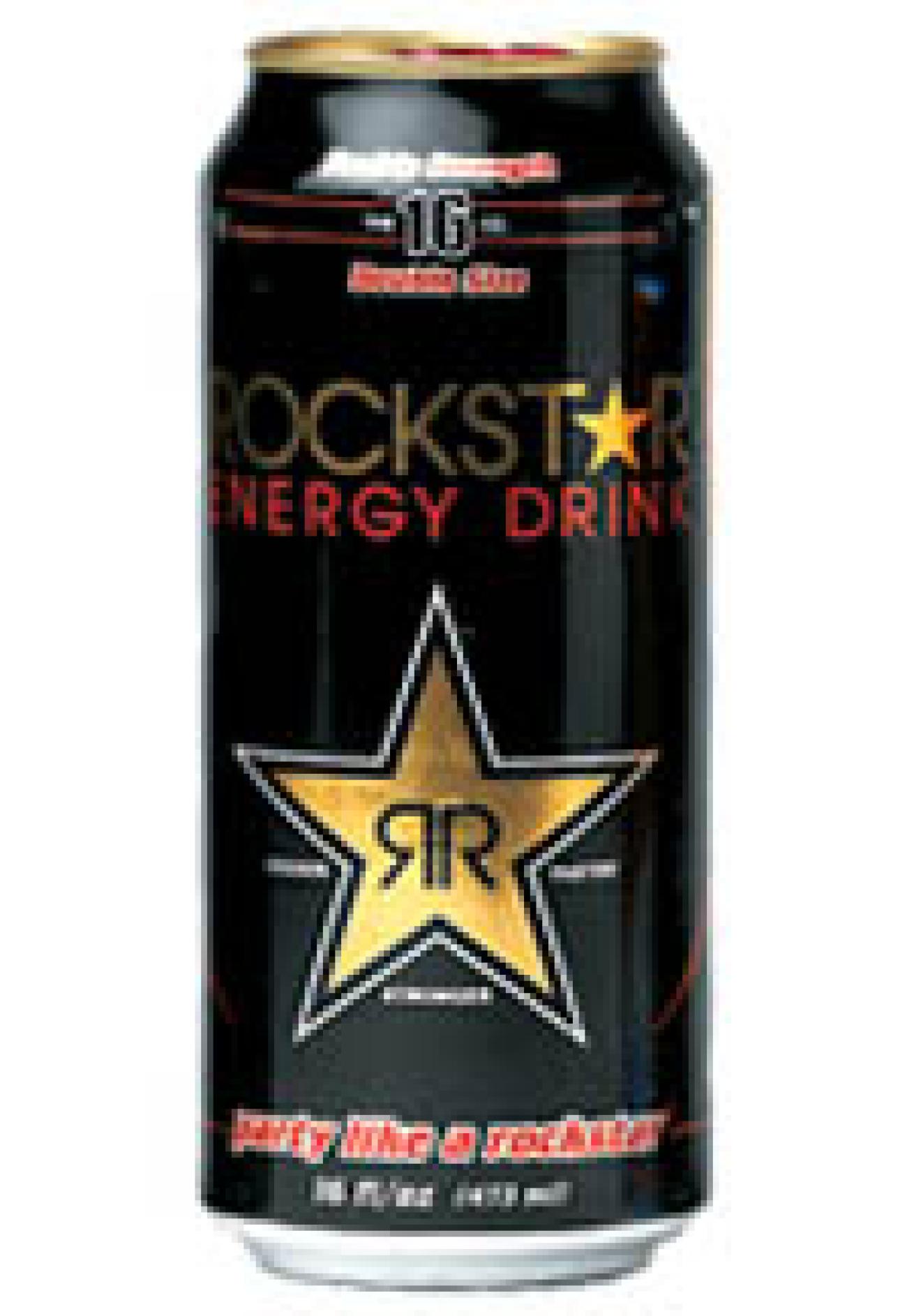
Rockstar
The Buzz: Available in the usual fruity, bubble-gum-like energy drink flavor as well as cola, Rockstar's motto is "Party like a rock star." Standout ingredient: Milk thistle, which the company says helps with hangovers.
The Buzz Kill: Still a little hard to find; often available in double-sized 16-ouncers, which is too much of this sweet stuff.
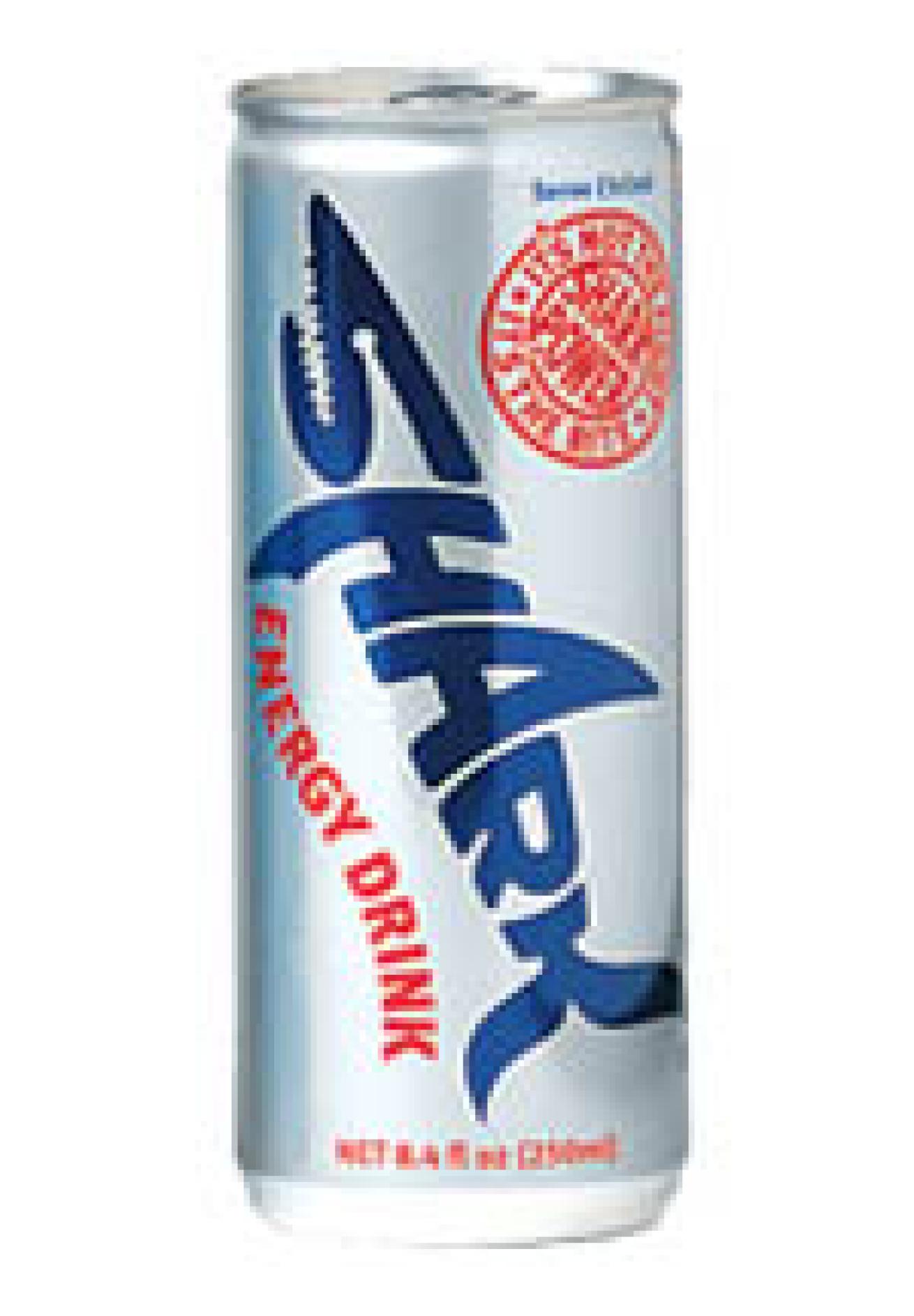
Shark
The Buzz: Similarly stacked with taurine, guarana and B vitamins. Tastes like a berry blend. The shiny silver can with shark logo looks sharp in a dive bag.
The Buzz Kill: With 35g of sugar, this land shark is considerably sweeter than its competitors.
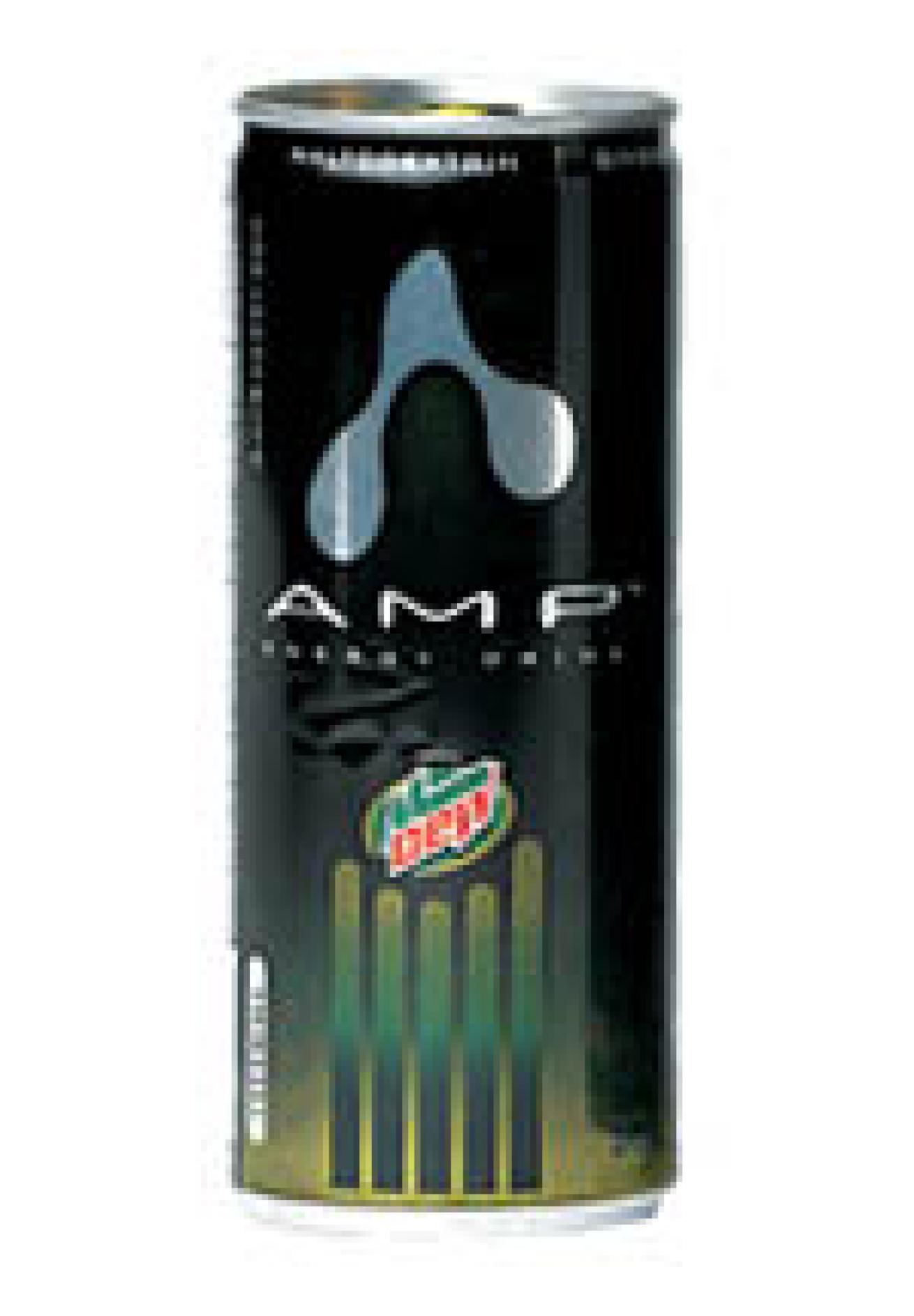
AMP
The Buzz: If Mountain Dew leaves you flat, this version, chock-full of energy drink additives, may jack you up. Some of its sweetness comes in the form of maltodextrin--a complex carbohydrate that may help prevent the energy spike and crash that often accompanies sugary sodas.
The Buzz Kill: The herb-infused Mountain Dew flavor isn't for everybody.






